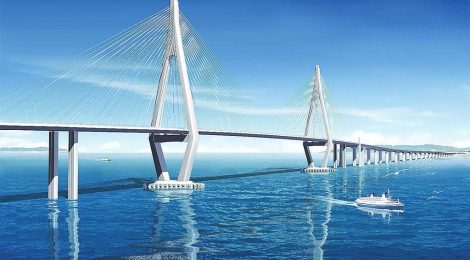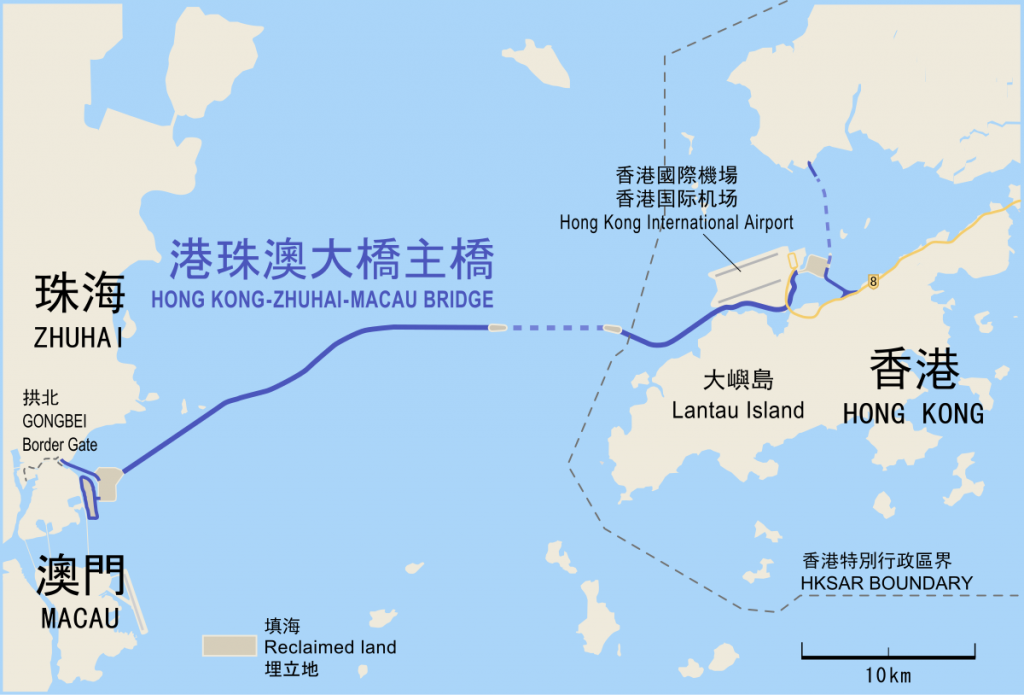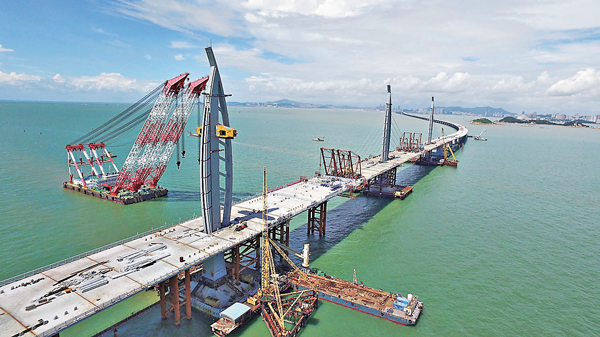
Hong Kong-Zhuhai-Macau: China’s troublesome longest bridge project
The Hong Kong-Zhuhai-Macau construction project consists of a series of bridges and tunnels, implying also a 150 hectare artificial island, crossing the Lingdingyang channel of the Pearl river estuary. The aim is to connect the three Special Economic Zones of Southern China: Hong Kong, Macau, and Zhuhai in Guangdong province, reason why the project is of key importance to Beijing. By overcoming the passive condition of the transport linkage between Hong Kong and Pearl River West, which relies mainly on water transport, the distance from Hong Kong to Macau and Zhuhai will be shorten from 160 to 30 kilometres, making it a 30 minutes trip.
The bridge project was initiated in December 2009 and was originally set to open in 2016 at a cost of approximately the equivalent of €9.4 billion. It is the first major combined bridge and tunnel sea crossing in China, and was jointly launched by the chief executive of Hong Kong at the time, Donald Tsang, and the then-Governor of Guangdong Province, Huang Huahua.
 However, since its start, the project has faced a number of controversies, least of which is the shifting deadline, when, in April 2016, the Hong Kong Highways Department applied to extend of the usage of a site to 2020. Moreover, it is estimated that costs have blown out to double the original budget. Critics have been raised also about work quality and safety, as serious dangers with the working platforms were pointed out, which contributed to add pressure to delivery timelines, finally worsening the situation. The Hong Kong administration was criticized by legislators for trying to conceal the number of fatalities during the construction of the bridge earlier this year. According to a report submitted by the Labour Department there, had been five deaths and 234 injuries between 2011 and 2016, but the numbers were questioned, as Hong Kong legislative members revealed that in fact nine people had died on the Hong Kong portion of the project alone.
However, since its start, the project has faced a number of controversies, least of which is the shifting deadline, when, in April 2016, the Hong Kong Highways Department applied to extend of the usage of a site to 2020. Moreover, it is estimated that costs have blown out to double the original budget. Critics have been raised also about work quality and safety, as serious dangers with the working platforms were pointed out, which contributed to add pressure to delivery timelines, finally worsening the situation. The Hong Kong administration was criticized by legislators for trying to conceal the number of fatalities during the construction of the bridge earlier this year. According to a report submitted by the Labour Department there, had been five deaths and 234 injuries between 2011 and 2016, but the numbers were questioned, as Hong Kong legislative members revealed that in fact nine people had died on the Hong Kong portion of the project alone.
In the last few days the project hit the headlines one again with news announcing the arrest of 21 employees – two senior executives and 19 lab technicians – of one of the government contractors, for alleged corruption in relation with faking concrete test results. The Hong Kong’s Independent Commission Against Corruption (ICAC), which conducted the operation codenamed “Greenfield,” believes that the some tests have not been conducted starting from 2015 in the attempt to meet the delivery deadlines. The chairman of the Hong Kong legislature’s transport panel called for inspections to be carried out on other infrastructural projects that have involved the same firm.
In the aftermath of the arrest, the ICAC interestingly issued a statement underlying that “there is no information or evidence to suggest that any public officers, contractors or material suppliers (or their personnel).”

The Hong Kong-Zhuhai-Macau bridge is now set to be completed by the end of 2017. In early May, the Hong Kong Highways Department issued a statement saying: “project team has overcome the challenges encountered by the Scenic Hill Tunnel of the Hong Kong-Zhuhai-Macau Bridge Hong Kong Link Road project, and is implementing the last bit of the works leading to the complete connection.” After previous delay, the administration announced three sections of a key 12km highway, which will eventually lead to the bridge, was to be fully connected by the end of the present month.
The government so far is unable to identify which parts of the bridge may have been compromised by the alleged faking of concrete test results. A former head of Hong Kong’s Institution of Engineers warned that parts of the 50 kilometre Hong Kong-Zhuhai-Macau Bridge would have to be replaced if the concrete was found to be substandard. “That would be the worst thing that could happen,” he said.
The recent scandal will not help the troublesome project already plagues by industrial accidents, delays, and cost overruns to be completed on time.




